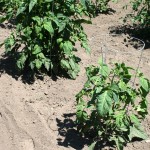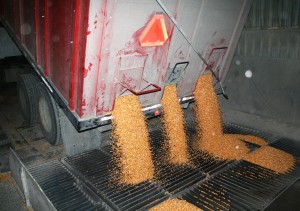Sun 8 Jul 2012
A new breed of tomato, the Mighty ‘Mato, is on trial in Thistle Ha’s garden this year. What’s unique about this tomato is that it’s a grafted plant, combining vigorous root stock with a Brandywine scion, a heritage variety famous for its quality and flavour. Grafting techniques have been used for fruit trees for a long time. Recent grafting experiments by greenhouse growers produced two to three times the number of tomatoes compared to the non-grafted variety. The Mighty ‘Mato is the first grafted tomato available for home gardens. Its root stock has been selected to be more tolerant to diseases and over/under watering, and to produce substantially more fruit over a longer season. A desirable tomato for home gardeners with summer vacation absences, limited growing space, or an aversion to using pesticides.
We are growing four regular Brandywine tomato plants beside the Mighty ‘Mato to check the marketing claim that this is a “super tomato”. Not all home gardeners know that tomatoes are stem rooters; planting the stem all the way up to the bottom leaves results in additional root formation and more vigorous growth. The graft on the Mighty ‘Mato is marked with a band, but instructions do not emphasize the importance of ensuring that the graft remains above the soil surface during planting. Otherwise the scion will form its own roots, eliminating the benefits of grafting, and resulting in an ordinary tomato at an extraordinary price – $15 a plant.




